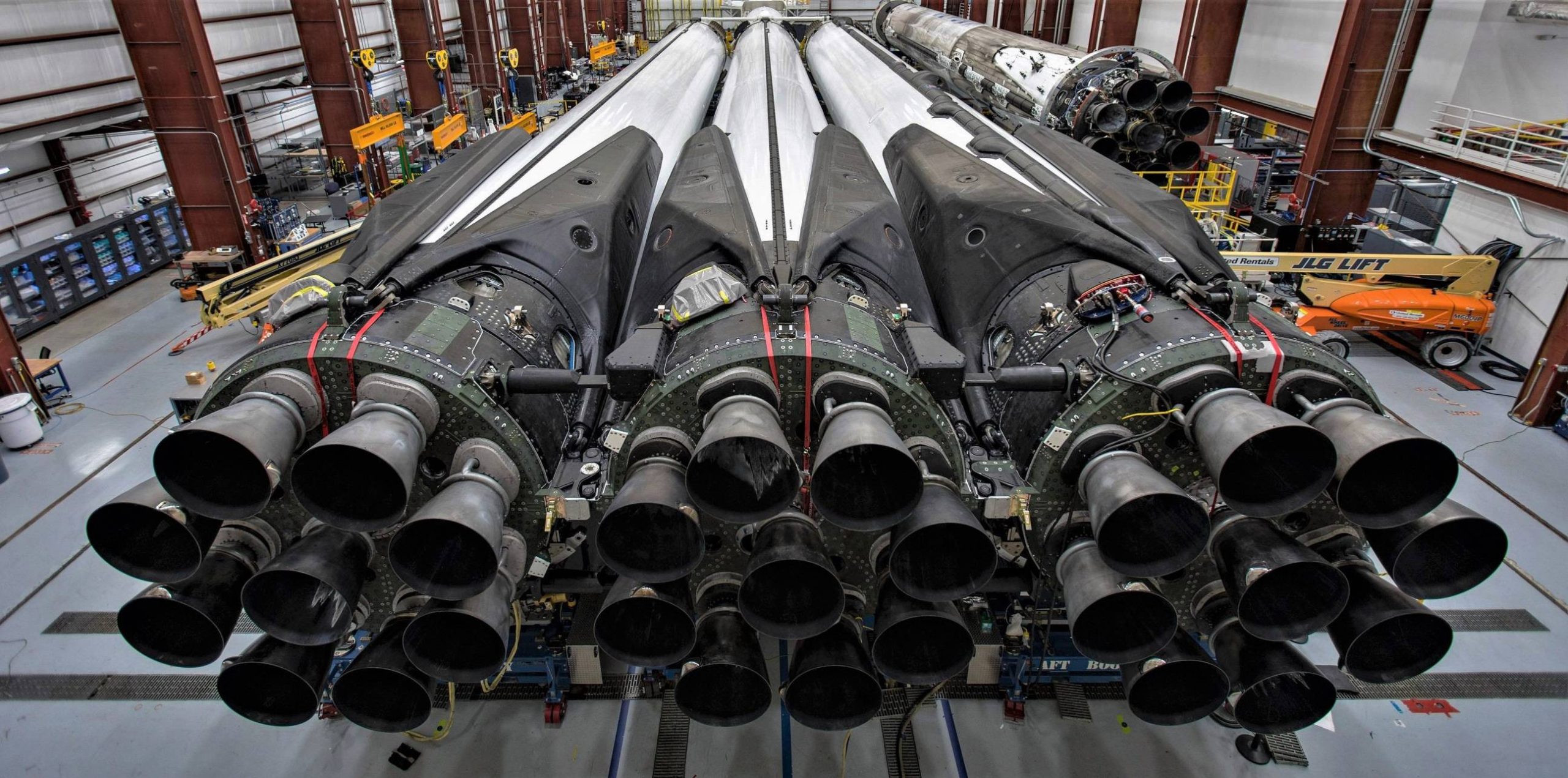
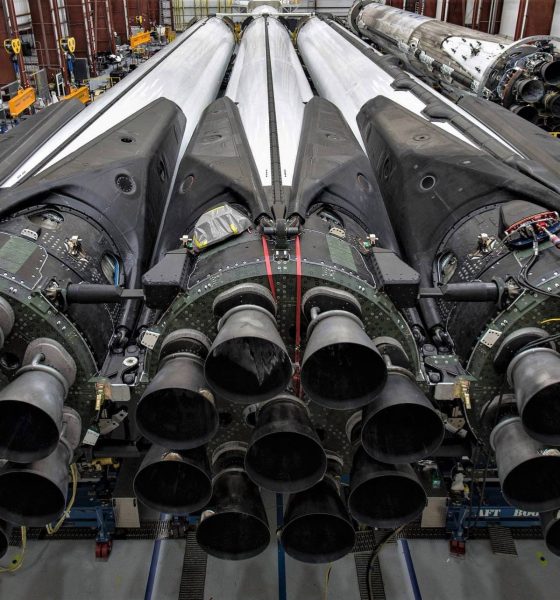
News
SpaceX’s first Falcon Heavy launch in three years eyes late-October liftoff
For the second time in 2022, SpaceX’s Falcon Heavy rocket has a firm launch date for the first time in more than three years.
Cursed by a seemingly relentless flood of delays impacting almost every one of the rocket’s payloads, Falcon Heavy made it within three or four months of ending its launch drought as recently as June 2022. At the time, the rocket was more or less ready to begin assembly, but NASA announced late that month that the Jet Propulsion Laboratory (JPL) and supplier Maxar had failed to finish qualifying software needed to power its Psyche spacecraft. Designed to journey to and enter orbit around the asteroid 16 Psyche, the complex trajectory required to reach it constrained the mission to a launch window sometime between August and October.
When JPL and Maxar were unable to properly test the spacecraft’s software in time for that window, they were forced to stand down and wait until the next earliest window, which begins in July 2023. That left Falcon Heavy with three more possible payloads to launch in 2022, but all three were chronically delayed and there was little reason to believe that even one of them would be ready to launch before 2023. However, Falcon Heavy’s single most delayed payload appears to have made a breakthrough, giving the most powerful rocket currently in operation at least one more shot at a 2022 launch.
Continuing an excellent series of reports tracking Falcon Heavy’s never-ending US military payload delays, Spaceflight Now broke the news with an official statement from the US Space Force, which confirmed that an unspecified industry partner had finally resolved payload problems that have delayed the military’s USSF-44 mission by two years. More importantly, the USSF spokesperson revealed a specific target of October 28th.
The US military has repeatedly offered implausible launch targets for USSF-44 with little to no official explanation for the mission’s delays, making it reasonable to appraise any specific launch date much like a boy crying wolf. But this particular target, announced within the same month as its date, is a bit more believable on its own.
Thankfully, it’s not on its own. On October 7th, SpaceX sent out an email confirming that Falcon Heavy is scheduled to launch USSF-44 sometime in October and asking members of the media to register for press site access and remote camera setup opportunities. It’s possible that the rocket or USSF-44 satellites will run into issues and trigger additional delays, but a press accreditation email is about as close as one can get to a believable guarantee that a secretive US military payload is on track for a SpaceX launch scheduled more than a week or so in the future.
The mission’s next major step forward will be the assembly of Falcon Heavy inside SpaceX’s main hangar at its NASA Kennedy Space Center LC-39A pad. Photos SpaceX shared last month and earlier this month of preparations for Crew-5, Falcon 9’s eighth successful astronaut launch, show that at least two of the four main stages that make up Falcon Heavy are already inside that hangar. One of two new Falcon Heavy side boosters was clearly spotted on September 30th.
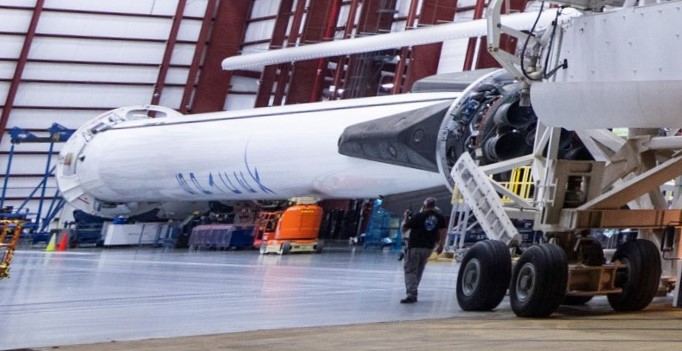
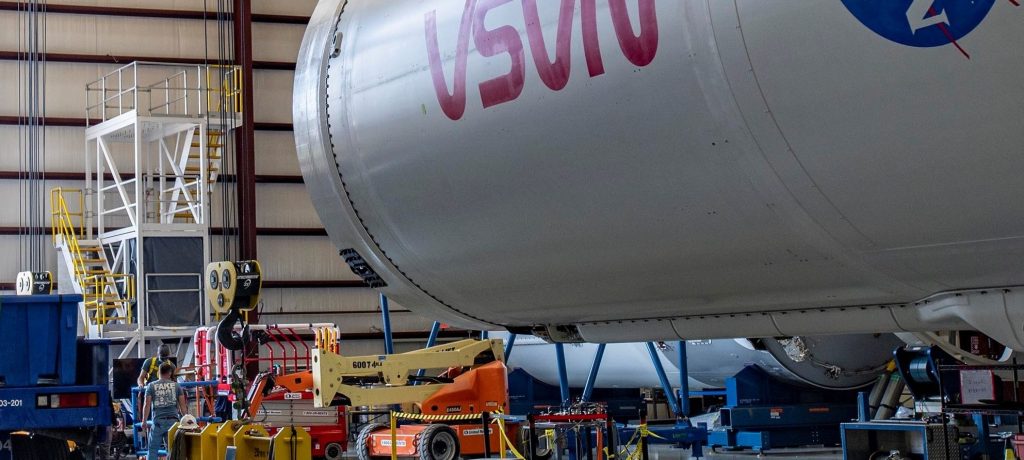
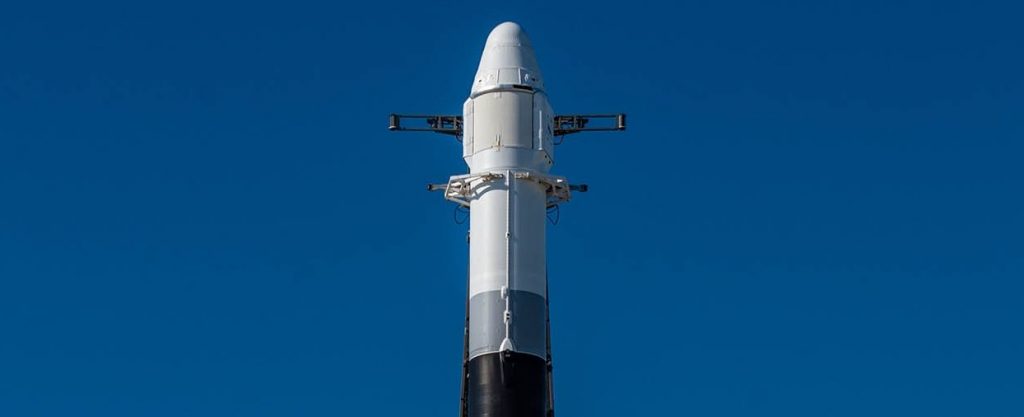
The rocket’s expendable upper stage was also clearly visible in a September 23rd photo. Ordinarily, Falcon upper stages are nearly indistinguishable from each other, but the upper stage stored behind the Crew-5 upper stage in the foreground features a unique grey band around the bottom of its airframe. In July 2019, SpaceX tested another Falcon 9 upper stage with the same grey band, which a spokesperson explained was meant to improve the rocket’s longevity in orbit.
Long orbital coasts of six or more hours are necessary for some of the most challenging launch trajectories. Direct-to-geostationary launches are the most common type of mission to require long coast capabilities and are often demanded by the US military. The grey band’s purpose is to increase the amount of heating absorbed from sunlight to warm the liquid kerosene (RP-1) fuel contained within that part of the rocket. When it gets too cold, kerosene – which freezes at a much higher temperature than Falcon’s liquid oxygen oxidizer – becomes viscous and slush-like before it freezes solid. If ingested, slushy fuel would likely prevent ignition or destroy the upper stage’s Merlin engine.
USSF-44 will be SpaceX’s first direct geostationary launch attempt, explaining why the grey band has reappeared more than three years after its first test. Coincidentally, Falcon Heavy’s third and latest launch occurred in June 2019, just one month before that upper stage test. 40 months later, the rocket might finally launch again, and it will do so by attempting what is likely SpaceX’s most difficult customer mission to date. To enable the high performance required for the mission, USSF-44 will also intentionally expend a Falcon Heavy booster for the first time. The rocket’s two new side boosters will boost back to Florida and land side by side at LZ-1 and LZ-2, but its new center core will be expended after a single flight.
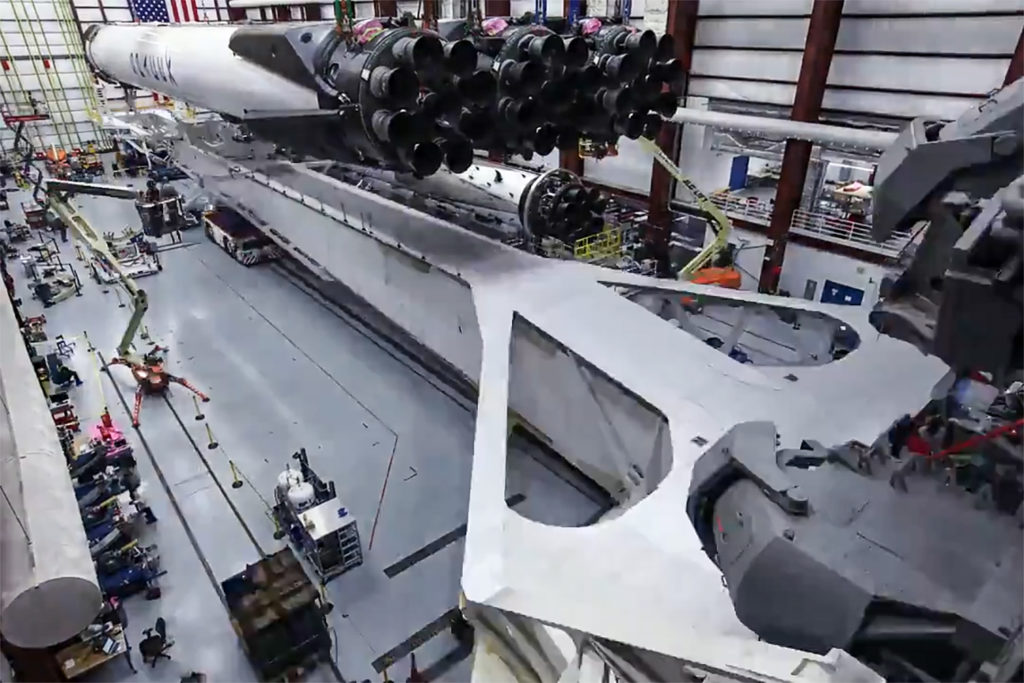
SpaceX has already finished converting Pad 39A’s mobile transporter/erector, which was previously set up for single-core Falcon 9 rockets. The T/E will eventually roll inside the pad’s integration hangar, confirming that Falcon Heavy has been fully assembled and is about to be installed on the structure. The rocket will then be rolled out to the pad and brought vertical for static fire testing, a process that will likely begin at least a week before the current October 28th launch target.
If testing is successful, Falcon Heavy will return to the hangar, have its fairing and USSF-44 payload installed, and roll out to the pad one last time. Stay tuned for updates on that ongoing process.

Elon Musk
Elon Musk and Tesla AI Director share insights after empty driver seat Robotaxi rides
The executives’ unoccupied tests hint at the rapid progress of Tesla’s unsupervised Robotaxi efforts.

Tesla CEO Elon Musk and AI Director Ashok Elluswamy celebrated Christmas Eve by sharing personal experiences with Robotaxi vehicles that had no safety monitor or occupant in the driver’s seat. Musk described the system’s “perfect driving” around Austin, while Elluswamy posted video from the back seat, calling it “an amazing experience.”
The executives’ unoccupied tests hint at the rapid progress of Tesla’s unsupervised Robotaxi efforts.
Elon and Ashok’s firsthand Robotaxi insights
Prior to Musk and the Tesla AI Director’s posts, sightings of unmanned Teslas navigating public roads were widely shared on social media. One such vehicle was spotted in Austin, Texas, which Elon Musk acknowleged by stating that “Testing is underway with no occupants in the car.”
Based on his Christmas Eve post, Musk seemed to have tested an unmanned Tesla himself. “A Tesla with no safety monitor in the car and me sitting in the passenger seat took me all around Austin on Sunday with perfect driving,” Musk wrote in his post.
Elluswamy responded with a 2-minute video showing himself in the rear of an unmanned Tesla. The video featured the vehicle’s empty front seats, as well as its smooth handling through real-world traffic. He captioned his video with the words, “It’s an amazing experience!”
Towards Unsupervised operations
During an xAI Hackathon earlier this month, Elon Musk mentioned that Tesla owed be removing Safety Monitors from its Robotaxis in Austin in just three weeks. “Unsupervised is pretty much solved at this point. So there will be Tesla Robotaxis operating in Austin with no one in them. Not even anyone in the passenger seat in about three weeks,” he said. Musk echoed similar estimates at the 2025 Annual Shareholder Meeting and the Q3 2025 earnings call.
Considering the insights that were posted Musk and Elluswamy, it does appear that Tesla is working hard towards operating its Robotaxis with no safety monitors. This is quite impressive considering that the service was launched just earlier this year.
Elon Musk
Starlink passes 9 million active customers just weeks after hitting 8 million
The milestone highlights the accelerating growth of Starlink, which has now been adding over 20,000 new users per day.

SpaceX’s Starlink satellite internet service has continued its rapid global expansion, surpassing 9 million active customers just weeks after crossing the 8 million mark.
The milestone highlights the accelerating growth of Starlink, which has now been adding over 20,000 new users per day.
9 million customers
In a post on X, SpaceX stated that Starlink now serves over 9 million active users across 155 countries, territories, and markets. The company reached 8 million customers in early November, meaning it added roughly 1 million subscribers in under seven weeks, or about 21,275 new users on average per day.
“Starlink is connecting more than 9M active customers with high-speed internet across 155 countries, territories, and many other markets,” Starlink wrote in a post on its official X account. SpaceX President Gwynne Shotwell also celebrated the milestone on X. “A huge thank you to all of our customers and congrats to the Starlink team for such an incredible product,” she wrote.
That growth rate reflects both rising demand for broadband in underserved regions and Starlink’s expanding satellite constellation, which now includes more than 9,000 low-Earth-orbit satellites designed to deliver high-speed, low-latency internet worldwide.
Starlink’s momentum
Starlink’s momentum has been building up. SpaceX reported 4.6 million Starlink customers in December 2024, followed by 7 million by August 2025, and 8 million customers in November. Independent data also suggests Starlink usage is rising sharply, with Cloudflare reporting that global web traffic from Starlink users more than doubled in 2025, as noted in an Insider report.
Starlink’s momentum is increasingly tied to SpaceX’s broader financial outlook. Elon Musk has said the satellite network is “by far” the company’s largest revenue driver, and reports suggest SpaceX may be positioning itself for an initial public offering as soon as next year, with valuations estimated as high as $1.5 trillion. Musk has also suggested in the past that Starlink could have its own IPO in the future.
News
NVIDIA Director of Robotics: Tesla FSD v14 is the first AI to pass the “Physical Turing Test”
After testing FSD v14, Fan stated that his experience with FSD felt magical at first, but it soon started to feel like a routine.

NVIDIA Director of Robotics Jim Fan has praised Tesla’s Full Self-Driving (Supervised) v14 as the first AI to pass what he described as a “Physical Turing Test.”
After testing FSD v14, Fan stated that his experience with FSD felt magical at first, but it soon started to feel like a routine. And just like smartphones today, removing it now would “actively hurt.”
Jim Fan’s hands-on FSD v14 impressions
Fan, a leading researcher in embodied AI who is currently solving Physical AI at NVIDIA and spearheading the company’s Project GR00T initiative, noted that he actually was late to the Tesla game. He was, however, one of the first to try out FSD v14.
“I was very late to own a Tesla but among the earliest to try out FSD v14. It’s perhaps the first time I experience an AI that passes the Physical Turing Test: after a long day at work, you press a button, lay back, and couldn’t tell if a neural net or a human drove you home,” Fan wrote in a post on X.
Fan added: “Despite knowing exactly how robot learning works, I still find it magical watching the steering wheel turn by itself. First it feels surreal, next it becomes routine. Then, like the smartphone, taking it away actively hurts. This is how humanity gets rewired and glued to god-like technologies.”
The Physical Turing Test
The original Turing Test was conceived by Alan Turing in 1950, and it was aimed at determining if a machine could exhibit behavior that is equivalent to or indistinguishable from a human. By focusing on text-based conversations, the original Turing Test set a high bar for natural language processing and machine learning.
This test has been passed by today’s large language models. However, the capability to converse in a humanlike manner is a completely different challenge from performing real-world problem-solving or physical interactions. Thus, Fan introduced the Physical Turing Test, which challenges AI systems to demonstrate intelligence through physical actions.
Based on Fan’s comments, Tesla has demonstrated these intelligent physical actions with FSD v14. Elon Musk agreed with the NVIDIA executive, stating in a post on X that with FSD v14, “you can sense the sentience maturing.” Musk also praised Tesla AI, calling it the best “real-world AI” today.








